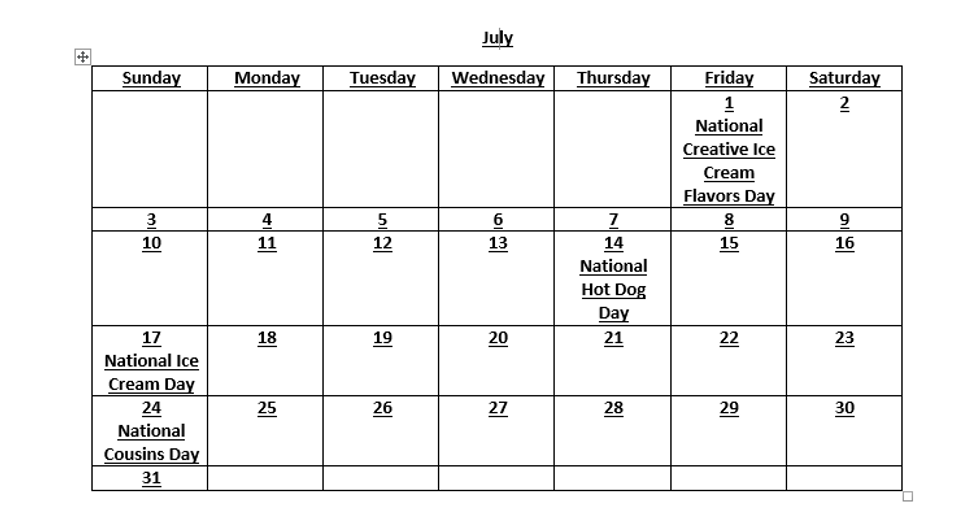Although Snapchat recently surpassed Twitter in its number of daily users, Twitter still has something that Snapchat doesn’t: a computer presence. And even if the millennial population may be more interested with content on Snapchat, Twitter is the hub where older millennials entering the job market, as well as many Gen Y and Gen X, sort through news updates while cooped up in the office. Twitter, unlike Snapchat, is a platform where everyone, from businesses to consumer brands to news pundits and gossip columnists, can interact with information without paying for content.
I recently was challenged with a task at my internship that may be easier said than done: make my employer a thought leader in technology and consumer insight.
As a company that has branded both lifestyle and innovative electronics for thirty years, it is one thing to brainstorm ways to publicize new products or rejuvenate a news angle within the confines of an office. But turning the discussion inside an office to a public feed is another beast. How do you make people pay attention? Why should others care?
You can look at this issue and try to make it more complicated than it needs to be. But the simplest, most effective way to combat such a challenge is to focus on material that you, or your agency, or your brand, believes is disruptive, interesting, and forward-thinking. Below, I have suggested several strategies that can provide you with a more formatted approach to Twitter posts:
1. Post At Least Three Times A Day
The chances that someone will see your tweet, even if you posted it when everyone was in front of their monitors, is slim because it can be overshadowed by 35 new tweets that just magically appeared. Twitter may be a very overwhelming business, but you will not gain anything from posting once a day. In fact, it would be more wasteful both for you and the typical Twitter consumer to see you post once daily. To them, your lack of Twitter usage qualifies you as a Twitter-amateur. And to your disservice you aren’t practicing enough to reach your goal. It is an info-heavy game, but if you want to be recognized, you have to play the game dirty too.
2. Create An On-Going List Of Industry #Hashtags
Part of building traction is recognizing key words that are relatable to your particular topic. For example, if I was posting about traveling, I would create a list of #hashtags specific to traveling. As the co-chairperson for public relations of my sorority Phi Sigma Sigma, I am responsible for running our Instagram account. One of the ways we keep interest in our sorority during the off-summer months is by generating campaigns, such as the travel picture you can find below. Some of the hashtags I included were pretty self-explanatory like #travelgram and #travelphisig. Others required a little bit of creativity, like #experience the world and #jumptheopportunity. If you aren’t sure what hashtags to use, you can browse Twitter’s search bar by typing in certain words or phrases and seeing what terms appear.
3. Design A Social Content Calendar
What are the upcoming national holidays? When is the next ‘free donut day’? When will Finding Dory be released? What are the upcoming technology conferences?
All these questions and more you can ask yourself when you are thinking about posting daily. These questions are powerful enough to make inside-the-box thoughts relatable to a larger audience.
You are probably thinking, "I work for Verizon’s social media, why would I ask myself when 'Finding Dory' is coming out?" A perfectly good question, but you are thinking too small if you ask it!
Finding Nemo is its own phenomenon that has proved its importance by the anticipated release of its long-awaited sequel. Why wouldn’t you tag the movie and suggest to your customers ‘to remember to silence their phones’ while they watch the movie? To me, that’s pushing the envelope by mixing two concepts that may not have anything in common, Verizon and "Finding Dory." Now, you can see that maybe they just could!
4. Don't Just Copy, Construct
A thought-leader never became so by copying others. Construct your own ideas into blog posts or longer articles. Take the time to think critically about your industry, where it has been, where it is, and where it might go. Provide insight by using statistics or survey results. And always make your words digestible to the everyday reader. Formulation and articulation will set you apart from the copy-catters.
I am hoping this list is helpful because as social channels become more polluted with speak-heads, we all will have to think of new ways to break the monotonous trend.





 StableDiffusion
StableDiffusion StableDiffusion
StableDiffusion 10. Extra BlanketsJuwenin Home 100% Cotton Knitted Throw Blanket
10. Extra BlanketsJuwenin Home 100% Cotton Knitted Throw Blanket StableDiffusion
StableDiffusion StableDiffusion
StableDiffusion File:Kishlaru familie.jpg - Wikimedia Commons
File:Kishlaru familie.jpg - Wikimedia Commons Photo by Hanna Balan on Unsplash
Photo by Hanna Balan on Unsplash StableDiffusion
StableDiffusion black blue and yellow round illustrationPhoto by
black blue and yellow round illustrationPhoto by 

 woman holding glass jar
Photo by
woman holding glass jar
Photo by 


 Today I am
Today I am  Go to the gym
StableDiffusion
Go to the gym
StableDiffusion
 Listen to more music
Photo by
Listen to more music
Photo by  Have more patience
StableDiffusion
Have more patience
StableDiffusion









